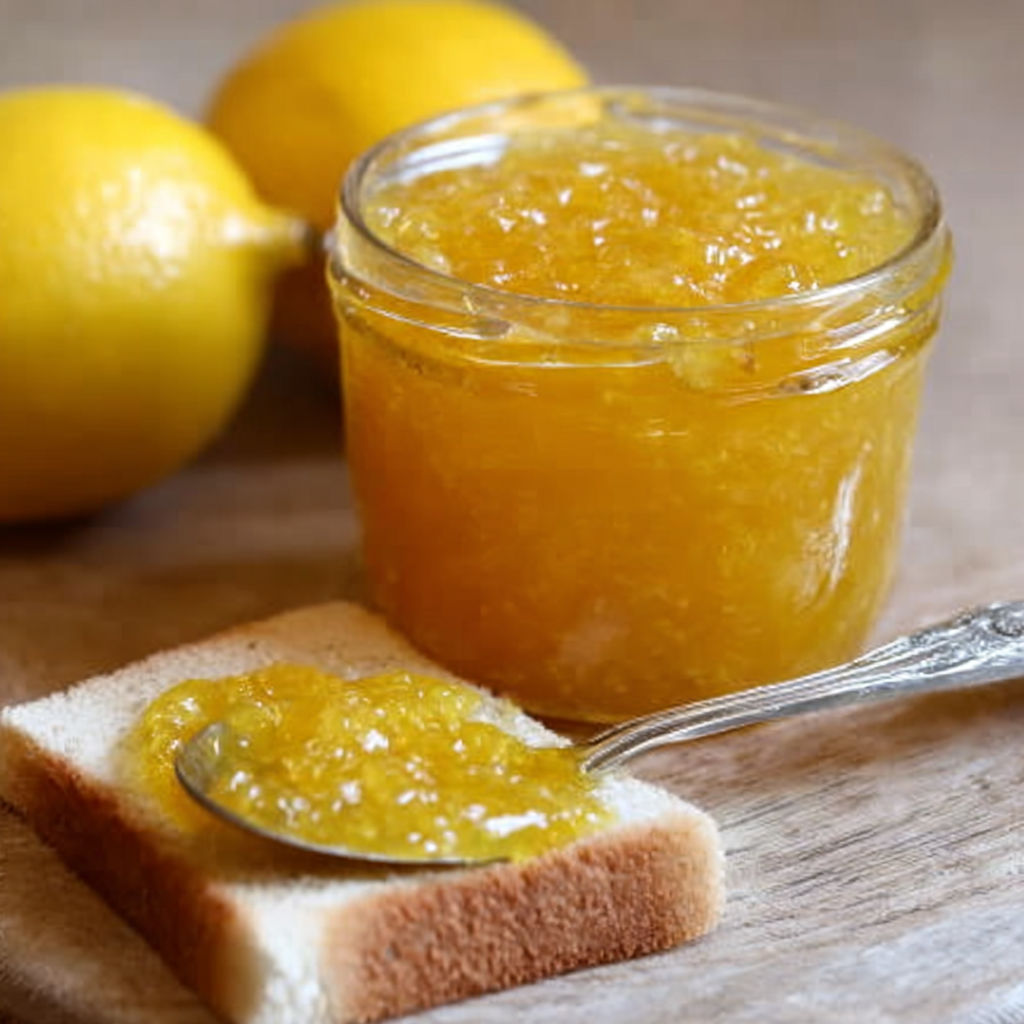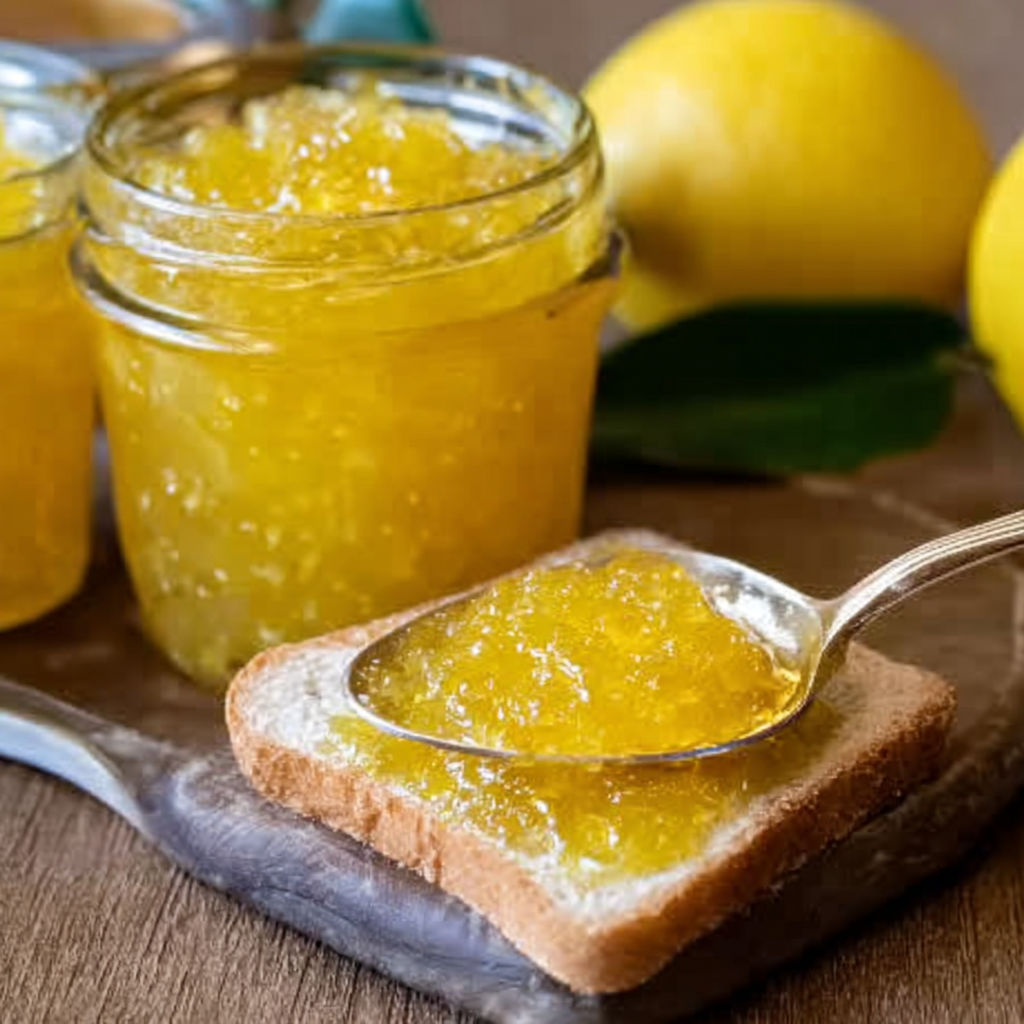 Pin it
Pin it
This Italian Lemon Jam is my no—fuss way to capture sunshine in a jar. I love how it transforms a few basic ingredients into a zesty, silky spread that brightens up breakfast or becomes a secret weapon in desserts. The balance of sweet and citrus is irresistible and comes together in less than an hour.
I first created a batch after a trip to Southern Italy, where every breakfast table had a pot of homemade citrus jam. Now, whenever I open a jar, the scent reminds me of sunny mornings on the Amalfi coast.
Ingredients
- Large lemons: Choose thick—skinned lemons for their aromatic zest and juiciness. Meyer or Eureka lemons work well.
- Granulated sugar: Brings sweetness and helps preserve the jam. Always use fresh sugar to avoid clumping.
- Water: Allows the jam to cook smoothly; filtered is best to avoid any off flavors.
- Vanilla extract: Gives the jam a subtle complexity and rounds out the sharpness; opt for pure vanilla for the best aroma.
Instructions
- Prepare Lemons:
- Wash the lemons thoroughly then dry them with a clean towel. Zest all lemons using a microplane for fine zest and juice them completely, removing any seeds as they make the jam bitter.
- Combine Ingredients:
- Place lemon zest, juice, sugar, and water in a heavy—bottomed pot. Use a wooden spoon to blend everything until sugar dissolves. Keep the pot off the heat at this stage so you can easily spot undissolved sugar granules.
- Cook the Jam:
- Set the pot over medium heat and bring the mixture to a steady boil. Stir regularly to prevent burning. Once boiling, lower the heat and let it simmer gently. The mixture will bubble and slowly thicken after 30 to 40 minutes. Watch for the color to turn slightly golden and for the consistency to become syrupy.
- Test for Doneness:
- To check if the jam is ready, spoon a little onto a cold plate. If it gently wrinkles and holds shape when pushed with your finger, it is done. If it is still runny, keep simmering in five minute increments.
- Jar and Cool:
- Take the pot off the heat. Let the jam rest for five minutes to release air bubbles. Pour jam into sterilized jars right up to the rim. Use a funnel for tidiness. Wipe the rims and seal jars tightly. Turn jars upside down for two minutes, then upright and let them cool completely for proper sealing.

Lemon zest is my hands—down favorite in this recipe. I love how it perfumes the whole kitchen and gives the jam a pleasant bite. My kids always want to help zesty jobs which turns the whole process into a cheerful family memory.
Storage Tips
Store your lemon jam in sealed glass jars in the refrigerator where it stays fresh for about three weeks. If you want to keep it for longer, make sure to use proper canning techniques to vacuum seal the jars. Allow jam to cool completely before refrigerating or freezing to prevent condensation inside the jars.
Ingredient Substitutions
If fresh lemons are unavailable you can use bottled lemon juice in a pinch, but the flavor will be softer. For extra tanginess, add a teaspoon of grated ginger. You can swap vanilla for almond extract for a different aroma. Try swapping some of the sugar with honey for a floral twist.
Serving Suggestions
This jam shines on warm toast or croissants, but I also swirl it into plain yogurt or dollop onto pancakes. It makes beautiful dessert toppings for cheesecakes or pavlovas. For something savory, brush it over roasted chicken or use as a glaze for seafood.
Cultural and Seasonal Context
Lemon jams have a long tradition in Italian coastal regions where citrus thrives. Every household has a unique variation, often passed down through generations. Winter and early spring are peak seasons for lemons, makes this jam an ideal cold weather kitchen project.
Seasonal Adaptations
Add a pinch of crushed cardamom for warmth in winter. Mix with orange zest for a milder variation. Top with fresh thyme or rosemary for a garden—fresh finish.
Success Stories
Many friends have made this jam their holiday gift staple. It always disappears quickly at brunches. Our family loves it as a midweek treat with fresh ricotta.
Freezer Meal Conversion
To freeze, let cooled jam settle in containers with a little space at the top for expansion. Thaw in the fridge overnight before using. Freezing preserves taste and texture nicely.

I hope you enjoy these bright spoonfuls as much as we do. Each batch brings back memories of laughter and sunshine, and maybe it becomes a family tradition for you too.
Recipe FAQs
- → What type of lemons work best?
Choose large, ripe lemons with thin, fragrant peel for optimal zest and juice.
- → How do you know the jam is ready?
The jam sets when a small amount gels on a cold plate. If not, simmer a few more minutes.
- → Can you reduce the sugar?
Reducing sugar is possible, but it may affect the set and flavor balance. Taste and adjust as needed.
- → How should it be stored?
Store in sterilized, sealed jars in a cool place. Refrigerate after opening for freshness.
- → What can you serve with lemon jam?
Spread on toast, add to yogurt, use as cake filling, or serve with scones for a citrusy twist.
